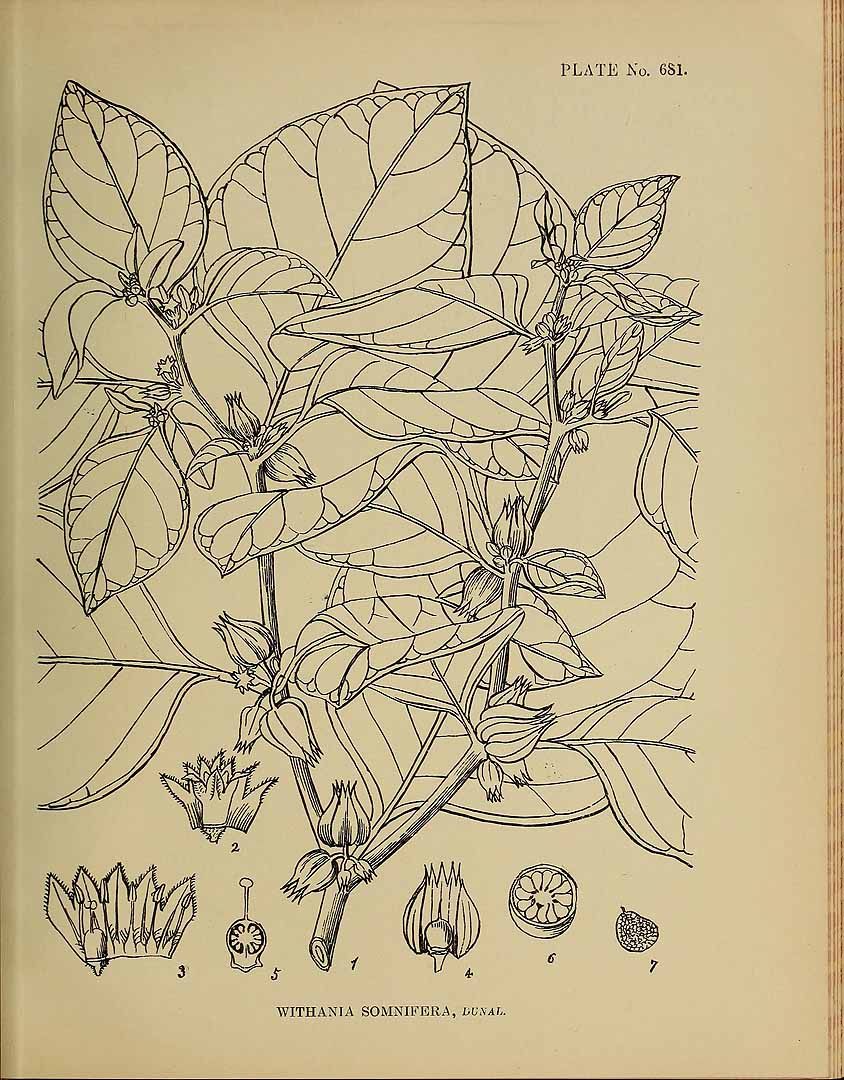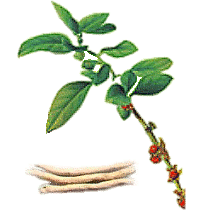 “I’m so stressed!!!” If you have said these words to yourself in the past two weeks, you need ashwagandha. “I’m so tired,” “I can’t take this anymore,” “I need a nap,” and “point me to the nearest bar,” all count too. Because all of us, at one time or another, balance plates on our heads while juggling sharp swords, it can easily be said that ashwagandha is a plant that everyone needs. Its wide-ranging capabilities and pleasant taste make it a wonder herb, and while the plates and swords are a metaphor, this herb’s anxiety-reducing capabilities are not...
“I’m so stressed!!!” If you have said these words to yourself in the past two weeks, you need ashwagandha. “I’m so tired,” “I can’t take this anymore,” “I need a nap,” and “point me to the nearest bar,” all count too. Because all of us, at one time or another, balance plates on our heads while juggling sharp swords, it can easily be said that ashwagandha is a plant that everyone needs. Its wide-ranging capabilities and pleasant taste make it a wonder herb, and while the plates and swords are a metaphor, this herb’s anxiety-reducing capabilities are not...
MATERIA MEDICA: ASHWAGANDHA
Latin Name: Withania somnifera
Common Names: Ashwagandha, winter cherry, withania, Indian ginseng Family: Solanaceae Botanical Description: A shrub that grows to about 2.5 - 5 feet high with a central stem. Leaves are ovate and alternate. Branches extend radially and are covered in fine hairs. The flowers are green on the outside and yellow inside. The ripe fruit are smooth orange-red berries and are inside calyx (a papery covering). Roots are long and brown. Part used: Root Harvesting Guidelines: Fruit and root are harvested in autumn from plants allowed to experience one full year of growth. Roots can be used fresh or dried Constituents: Alkaloids, steroidal lactones (leaves), including withanolides, iron (Winston and Maimes, 2007; Chevallier, 2000). Energetics & Tastes: Warm, moist, sweet, slightly bitter Actions:
- Adaptogen
- Anti-Anxiety
- Anti-convulsant
- Anti-tumor
- Rejuvenative
- Reproductive tonic
- Tonic
- Immunomodulant
- Anti-inflammatory
- Antioxidant
- Nervine
- Antispasmodic
USES:
- Gynecology: Excellent post-partum energy tonic and as a stimulant for milk production. Tones uterine muscles. Can be used as part of a formula for women with dysmenorrhoea or amenorrhoea. Eases a variety of peri-menopausal and menopausal symptoms including insomnia, anxiety, agitation, restlessness, fatigue, cloudy thinking, and muscle pain.
- Immunity: Adaptogenic and rejuvenating tonic. Beneficial to people with autoimmune conditions such as rheumatoid and osteoarthritis, cancer, and chronic connective tissue disorders. Appears to have both immunosuppressive and immune tonic qualities, bringing a depleted, overly stimulated or stressed body back into balance. (pg 133, Pole, Adaptogens, pg 140)
- Donald Yance recommends using ashwagandha during and after radiation therapy as he says it ³significantly increases white blood cell count, reducing leucopenia caused by radiation and immune suppressive drugs.².(Pg 127, Herbal Medicine, Healing and Cancer)
- Nerves: Calming and strengthening to the nervous system without over-stimulating. Tonic to the central nervous system. Effective for nervous and depleted conditions such as anxiety, nervous exhaustion, impaired memory, insomnia, ADHD, and chronic debilitation due to physical and mental over-work. Calms the mind and promotes a deep, restful sleep.
- Reproductive: Female and male reproductive tonic. Increases sperm motility and sperm count.
- Tissues: Improves poor muscle tone. Beneficial to children and the elderly who suffer from emaciation and anemia. Rich in iron, use the powdered roots in warm milk with blackstrap molasses for women with iron-deficient anemia.
- Useful for people who feel debilitated and/or have a low body weight. Helpful for reducing inflammation and strengthening muscle tone post-surgically.
- Thyroid: Useful in hypothyroid disorders. Enhances endocrine function
- Powder: 1/2-1 tsp powder in 4-8 oz of warm milk (dairy, coconut milk, almond milk, oat milk…) with honey, once or twice per day. Mix the powder into honey or ghee if you do not drink milk. Ayurvedic practitioners recommend using ashwagandha powder in a ³reproductive tissue building carrier²; milk, ghee, almond milk and honey.
- Ashwagandha powder can be mixed in a 50/50 ratio with organic ghee and taken in teaspoon doses, 2-3 times per day.
- Tincture (1:3 or 1:5): made from dried roots, take 1/4-1 teaspoon, 3 times per day.
- Capsules: 400-500 mg, twice a day.
- Not recommended during acute infections, or for a person with severe congestion or high ama (thick coated tongue, chronic constipation). Because of the roots warming qualities it may be too heating for people who run hot. May potentiate the action of barbiturates. (Adaptogens, p. 141)
- Traditionally used in India in small amounts, less than 3 grams/day, during pregnancy to calm a restless fetus and strengthen the mother. Pg 39, Herbal Therapy and Supplements
- In the west it’s use during pregnancy is not recommended because of possible spasmolytic activity to the uterus. Best to consult with your midwife and Ayurvedic practitioner if pregnant. ³
- The evidence contradicting its use during pregnancy is limited and questionable, and Ayurvedic practitioners have used it traditionally during pregnancy² writes Aviva Romm, pg 202, from her book Botanical Medicine For Women¹s Health.
- Avoid using if you have an allergy or sensitivity to plants in the nightshade family (ie: tomatoes, potatoes, eggplant). Consult your healthcare practitioner if you have hyperthyroidism before using ashwagandha as it stimulates the thyroid.




